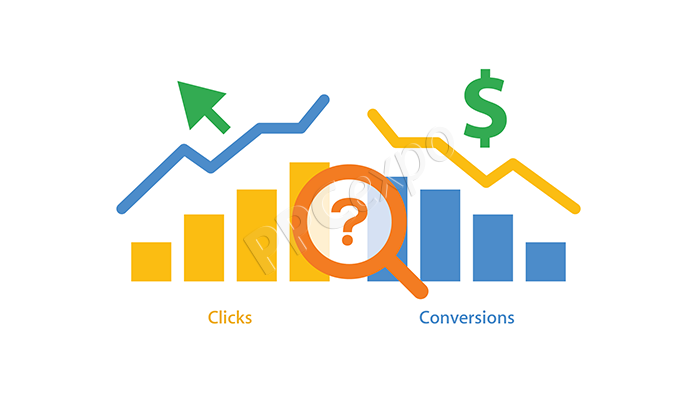In the digital age, a brand’s reputation is its most valuable asset. With the rapid exchange of information and opinions online, maintaining a positive brand image has become both more challenging and more critical than ever before. This comprehensive guide explores the strategies and tools necessary for monitoring and managing brand reputation, ensuring your business can navigate the complexities of the modern marketplace effectively.

Understanding Brand Reputation
Definition and Importance
Brand reputation refers to the perception that consumers, stakeholders, and the general public have of a brand. It encompasses the values, quality, trustworthiness, and overall image that a brand projects. A strong reputation can lead to increased customer loyalty, higher sales, and a competitive edge, while a negative reputation can result in lost revenue and diminished trust.
Factors Influencing Brand Reputation
Several factors contribute to a brand’s reputation:
- Customer Experience: Positive interactions with a brand lead to favorable perceptions.
- Product Quality: High-quality products and services enhance brand image.
- Communication and Transparency: Open and honest communication builds trust.
- Corporate Social Responsibility: Ethical practices and contributions to society improve reputation.
- Employee Satisfaction: Happy employees often act as brand ambassadors, promoting a positive image.
The Role of Social Media in Brand Reputation
The Power of Social Media
Social media platforms have amplified the speed and reach of information dissemination. A single post or tweet can quickly go viral, significantly impacting a brand’s reputation, positively or negatively. Consequently, social media has become a crucial arena for reputation management.
Real-Time Feedback and Interaction
Social media offers a direct channel for customers to provide feedback, ask questions, and express opinions. Brands can leverage this real-time interaction to address concerns promptly, demonstrate responsiveness, and show that they value customer input.
Case Studies of Social Media Impact
- Positive Impact: Nike’s social media campaigns, such as the “Dream Crazy” campaign featuring Colin Kaepernick, have boosted the brand’s image by aligning with social justice causes, resonating with their target audience, and driving sales.
- Negative Impact: United Airlines faced a severe backlash after a video of a passenger being forcibly removed from an overbooked flight went viral. The company’s slow and inadequate response exacerbated the situation, leading to significant reputational damage and financial losses.
Monitoring Brand Reputation
Tools and Techniques
Effective brand reputation monitoring requires a combination of tools and techniques to track and analyze public sentiment. Here are some essential tools:
Social Media Monitoring Tools
- Hootsuite: Allows brands to monitor multiple social media platforms from a single dashboard, track brand mentions, and analyze engagement.
- Brandwatch: Offers advanced social listening capabilities, enabling brands to track conversations, analyze sentiment, and identify trends.
- Mention: Provides real-time alerts for brand mentions across social media, blogs, and news sites, helping brands stay informed of public perception.
Review and Feedback Platforms
- Google Alerts: Sends notifications for brand mentions across the web, including news articles and blog posts.
- Yelp and TripAdvisor: Essential for businesses in the hospitality and service industries to monitor customer reviews and feedback.
Sentiment Analysis Tools
- Lexalytics: Uses natural language processing (NLP) to analyze text and determine sentiment, helping brands understand public opinion.
- MonkeyLearn: Offers customizable text analysis and sentiment analysis, useful for processing large volumes of customer feedback.
Key Metrics to Monitor
To effectively manage brand reputation, it’s crucial to monitor specific metrics:
- Sentiment Score: Measures the overall tone of brand mentions, indicating whether the perception is positive, negative, or neutral.
- Engagement Rate: Tracks the level of interaction (likes, comments, shares) with brand content, reflecting customer interest and involvement.
- Share of Voice: Compares the volume of brand mentions to competitors, indicating the brand’s visibility and prominence in the market.
- Net Promoter Score (NPS): Gauges customer loyalty and satisfaction by asking how likely they are to recommend the brand to others.
Creating a Monitoring Strategy
A robust monitoring strategy involves:
- Setting Clear Objectives: Define what aspects of brand reputation you want to monitor (e.g., customer satisfaction, product feedback, crisis detection).
- Choosing the Right Tools: Select tools that align with your objectives and provide comprehensive data coverage.
- Establishing a Monitoring Schedule: Regularly review and analyze data to stay updated on public perception.
- Training Staff: Ensure team members are skilled in using monitoring tools and interpreting data insights.
Managing Brand Reputation
Responding to Feedback
Positive Feedback
- Acknowledge and Appreciate: Thank customers for positive feedback and express gratitude for their support.
- Amplify Positive Stories: Share positive reviews and testimonials on your social media channels and website to boost credibility and attract new customers.
Negative Feedback
- Respond Promptly: Address negative feedback quickly to show customers that their concerns are taken seriously.
- Be Professional and Empathetic: Respond with professionalism and empathy, acknowledging the issue and offering a solution or apology.
- Take Conversations Offline: When appropriate, move the discussion to private messages or direct contact to resolve the issue more effectively.
Crisis Management
Preparing for a Crisis
- Develop a Crisis Management Plan: Outline steps to take in various crisis scenarios, including who will respond, how, and when.
- Designate a Crisis Management Team: Assign specific roles and responsibilities to team members to ensure a coordinated response.
- Train Employees: Conduct regular training sessions to prepare employees for potential crises and ensure they understand their roles.
During a Crisis
- Monitor the Situation: Use monitoring tools to track the crisis’s progression and public sentiment.
- Communicate Transparently: Provide timely updates and be honest about the situation, acknowledging mistakes and outlining corrective actions.
- Engage with Stakeholders: Keep customers, employees, and partners informed and involved in the resolution process.
Post-Crisis Recovery
- Evaluate the Response: Assess the effectiveness of the crisis management plan and identify areas for improvement.
- Restore Trust: Implement measures to rebuild trust, such as offering compensation, making public apologies, and demonstrating corrective actions.
- Learn and Adapt: Use the crisis as a learning experience to strengthen future crisis management strategies.
Building a Positive Brand Image
Consistent Brand Messaging
- Develop a Strong Brand Voice: Ensure all communications align with the brand’s values and personality.
- Maintain Consistency: Keep messaging consistent across all platforms and touchpoints to reinforce brand identity.
Engaging Content
- Create Valuable Content: Produce content that educates, entertains, or inspires your audience, positioning your brand as a valuable resource.
- Use Storytelling: Share stories that resonate with your audience, highlighting customer experiences, brand history, and mission-driven initiatives.
Community Involvement
- Support Local Causes: Engage in community activities and support local charities to build goodwill and demonstrate corporate social responsibility.
- Encourage Employee Participation: Involve employees in community service projects to enhance the brand’s image and foster a sense of purpose.
Measuring and Analyzing Brand Reputation Management Efforts
Key Performance Indicators (KPIs)
- Customer Satisfaction Score (CSAT): Measures how satisfied customers are with your products, services, or interactions.
- Brand Perception Surveys: Collect direct feedback from customers regarding their perception of the brand.
- Crisis Resolution Time: Tracks the time taken to address and resolve crises, reflecting the efficiency of your crisis management strategy.
- Reputation Score: Aggregates various metrics, such as sentiment score and share of voice, to provide an overall reputation score.
Continuous Improvement
- Regularly Review Data: Continuously analyze data from monitoring tools to identify trends and areas for improvement.
- Adapt Strategies: Adjust reputation management strategies based on data insights and evolving market conditions.
- Engage in Proactive Outreach: Regularly communicate with customers and stakeholders to maintain a positive relationship and address potential issues before they escalate.
Conclusion
Monitoring and managing brand reputation is an ongoing process that requires vigilance, responsiveness, and strategic planning. By leveraging the right tools and techniques, businesses can effectively track public sentiment, address feedback, and maintain a positive brand image. Whether handling routine feedback or navigating a crisis, the key is to remain transparent, empathetic, and proactive in all interactions. In doing so, brands can build and sustain a reputation that fosters trust, loyalty, and long-term success in the marketplace.

Add a Comment